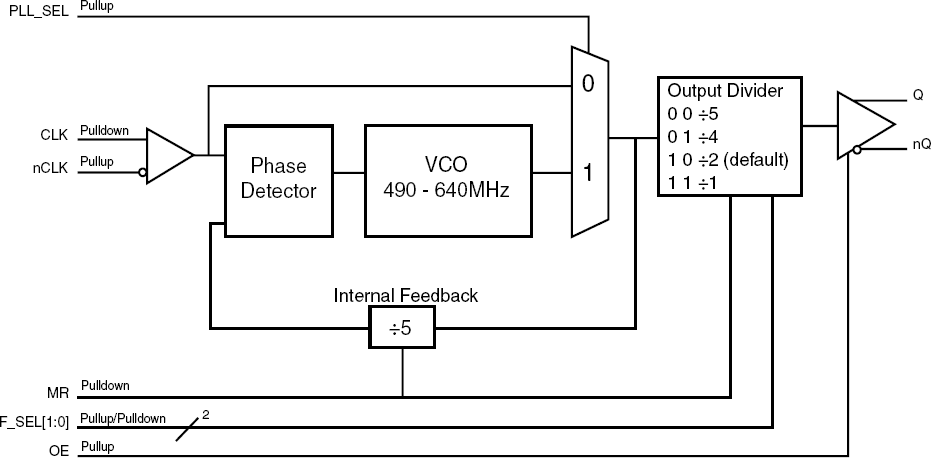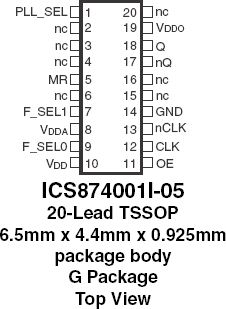特長
- One differential LVDS output pair
- One differential clock input
- CLK, nCLK supports the following input levels: LVPECL, LVDS, LVHSTL, SSTL, HCSL
- Input frequency range: 98MHz to 128MHz
- Output frequency range: 98MHz to 640MHz
- VCO range: 490MHz - 640MHz
- Cycle-to-cycle jitter: 50ps (maximum)
- Full 3.3V operating supply
- PCI Express® (2.5Gb/s) and Gen 2 (5 Gb/s) jitter compliant
- -40°C to 85°C ambient operating temperature
- Available in lead-free (RoHS 6) package
説明
The 874001I-05 is a high performance Jitter Attenuator designed for use in PCI Express®™ systems. In some PCI Express® systems, such as those found in desktop PCs, the PCI Express® clocks are generated from a low bandwidth, high phase noise PLL frequency synthesizer. In these systems, a jitter attenuator may be required to attenuate high frequency random and deterministic jitter components from the PLL synthesizer and from the system board. The 874001I-05 has a bandwidth of 6MHz with <1dB peaking, easily meeting PCI Express® Gen2 PLL requirements. The 874001I-05 uses IDT's 3RD Generation FemtoClock® PLL technology to achieve the lowest possible phase noise. The device is packaged in a small 20-pin TSSOP package, making it ideal for use in space constrained applications such as PCI Express® add-in cards.
適用されたフィルター
フィルター
ソフトウェア/ツール
サンプルコード
シミュレーションモデル
This is the first video in our PCIe series. In this video, we define PCIe architectures, focusing on common and separate clock architectures. Watch the rest of the video series below where Ron will cover the impact of different timing architectures.
In this episode, Ron Wade from IDT (acquired by Renesas) explains PCIe common clocking and its impact on timing solutions. Learn about using a single clock source, fan-out buffers, and the considerations for spread spectrum and non-spread spectrum clocking in PCIe systems.
In this video, we explore PCIe with separate reference clocks and the effects of clock selection. Learn how separate reference clocks work and their impact on system performance and stability.
This video provides a high-level overview of Separate Reference Clock with Independent Spread (SRIS) architectures for PCI Express systems, additional performance requirements that this clocking architecture imposes on the reference clocks, and some system implications encountered trying to implement the architecture.



